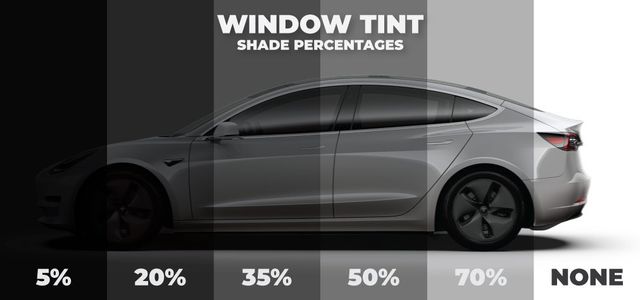Window Tinting Laws and Standards: What You Need to Know Before Tinting Your Vehicle
Before proceeding with window tinting for your vehicle, it is important to acquaint yourself with the varied legislations and standards that control this practice across various states. These policies dictate the permitted levels of tint darkness, commonly measured by visible light transmission (VLT) percents, and consist of particular specifications for front windscreens aimed at ensuring road safety and security.
Introduction of Home Window Tinting Rules
Window tinting regulations are regularly subject to variant across various jurisdictions, reflecting local guidelines and safety considerations. These legislations dictate the allowable levels of tint darkness and reflectiveness on vehicle windows, making certain that vehicle drivers maintain sufficient visibility while likewise safeguarding against unsafe UV rays and warmth.
The majority of guidelines classify window tinting based on the Visible Light Transmission (VLT) percentage, which suggests the amount of light that can go through the window. Typically, lower VLT percentages represent darker colors. Legislations commonly distinguish in between the front, side, and back windows, with more stringent limitations related to the front windshield to enhance security for both the chauffeur and various other roadway customers.
In addition, some jurisdictions enforce limitations on the reflectivity of the tint, protecting against excessive glow that might impair presence. Exceptions to these legislations may exist for people with particular clinical problems calling for extra sun security. Compliance with window tinting policies is essential, as offenses can cause fines, necessary elimination of the tint, and possible increases in insurance policy costs. It is necessary for lorry owners to acquaint themselves with regional laws before continuing with window tinting setups.
State-by-State Tint Rules
Understanding the particular home window tinting guidelines in each state is vital for lorry proprietors looking for to comply with the law. Each state in the U.S. has established its own collection of guidelines regulating window tinting, which can vary dramatically. These regulations typically dictate the allowed levels of color darkness, the sorts of windows that can be tinted, and any kind of clinical exceptions that may apply.
As an example, states like The golden state have rigorous restrictions on tint darkness for front windows, while others, such as New Mexico, may allow darker tints. In addition, particular states mandate particular presence portions for various home windows, consisting of the windshield, front side home windows, and rear windows. It is critical for car proprietors to acquaint themselves with their state's regulations to stay clear of prospective fines or charges.
Additionally, some states might require a certification sticker label to be placed on colored home windows, indicating compliance with state regulations. Failing to comply with these laws not just runs the risk of legal effects however can likewise influence security and exposure while driving. Automobile owners need to perform detailed research study or get in touch with neighborhood authorities to guarantee full understanding and compliance with state-by-state color policies.
Allowed Color Types and degrees
Many vehicle proprietors may be stunned to learn that allowed color degrees and types vary widely across various states. Each state has established its very own laws concerning the permissible darkness and reflectivity of home window tint, usually determined by Visible Light Transmission (VLT) percentages. VLT describes the amount of light that can go through the colored home windows; hence, a lower percent indicates a darker tint.

Additionally, the types of tint products allowed can that site vary, with some states prohibiting mirror-like or metallic coatings. It is crucial for lorry proprietors to acquaint themselves with their state's details laws to make certain browse around here compliance. Non-compliance can result in fines, required elimination of the tint, or various other legal effects, making it imperative to comprehend these policies before proceeding with setup.
Medical Exemptions for Tinting
While not all states provide allocations for medical exceptions concerning window tinting, those that do recognize the need for specific people to enhance exposure and convenience because of medical problems. Numerous clinical problems, such as lupus, skin cancer, and certain eye disorders, can make individuals especially delicate to sunshine. These people may need darker tints to shield themselves from dangerous UV rays and glare.

It is necessary to keep in mind that also with a medical exception, there may still be constraints on the degree of tint enabled. Conformity with state regulations guarantees that people are both protected and within legal restrictions. Those thinking about medical exceptions need to contact their local Division of Electric motor Automobiles or equal authority to recognize the needs and treatments necessary to request an exception successfully.
Charges for Non-Compliance
Failing to abide by window tinting regulations can bring about substantial penalties, which differ by state. Police are empowered to release citations for vehicles that do not stick to the defined tinting guidelines. These penalties generally consist of penalties, which can vary from modest total up to several hundred dollars, depending upon the extent of the offense and the state in concern.
In some jurisdictions, repeated offenses may cause intensifying penalties or additional charges, such as mandatory court appearances. Non-compliance may necessitate the removal of illegal tinting, typically at the owner's expenditure. In severe cases, regular wrongdoers might deal with suspension of their lorry enrollment until conformity is achieved.
Additionally, insurance coverage effects might arise from receiving multiple citations for window tint offenses. Insurance companies may see such infractions as an indicator of riskier actions, potentially leading to increased premiums or problem in insurance coverage.
To avoid these fines, it is vital for lorry proprietors to familiarize themselves with their local window tinting legislations and ensure that their vehicle complies (Window Tinting). This proactive approach not only stays clear Full Article of lawful ramifications however likewise promotes road safety
Conclusion

Many regulations identify window tinting based on the Visible Light Transmission (VLT) percentage, which indicates the amount of light that can pass with the window. Compliance with window tinting guidelines is crucial, as violations can result in penalties, compulsory elimination of the color, and possible increases in insurance coverage costs.Understanding the particular window tinting policies in each state is crucial for vehicle proprietors looking for to comply with the legislation. These guidelines usually dictate the permitted levels of color darkness, the types of home windows that can be tinted, and any type of clinical exceptions that may use.
For circumstances, states like California have rigorous constraints on tint darkness for front windows, while others, such as New Mexico, might permit darker colors.